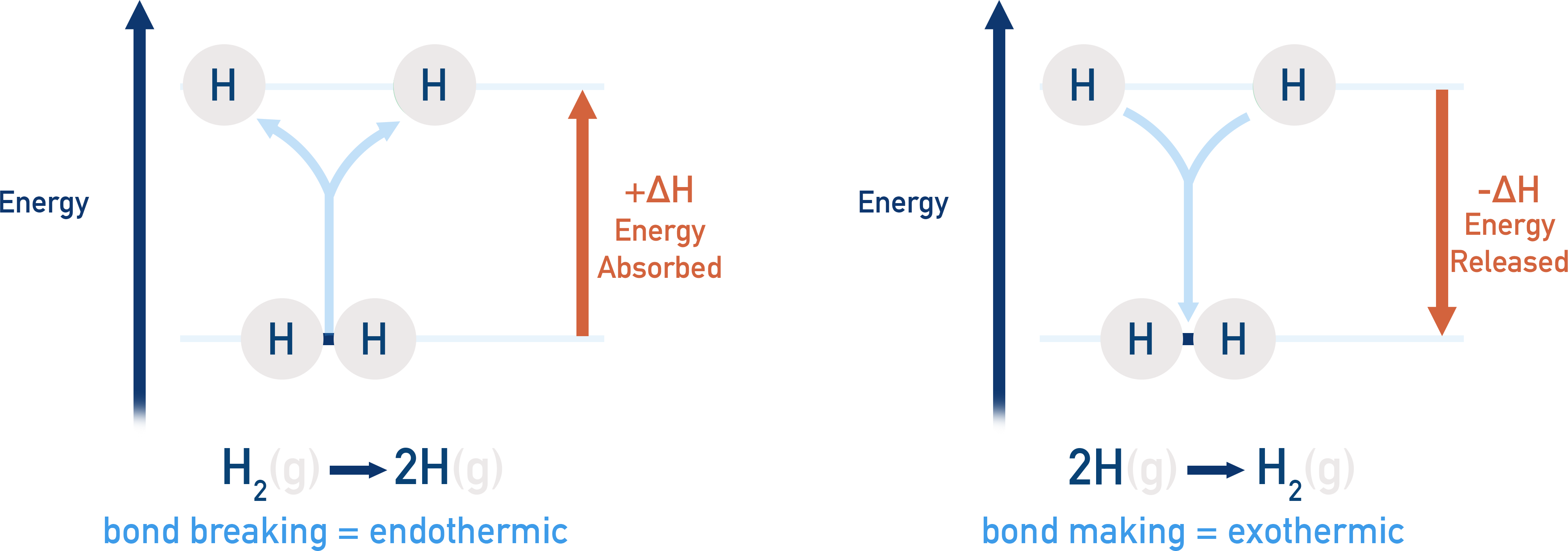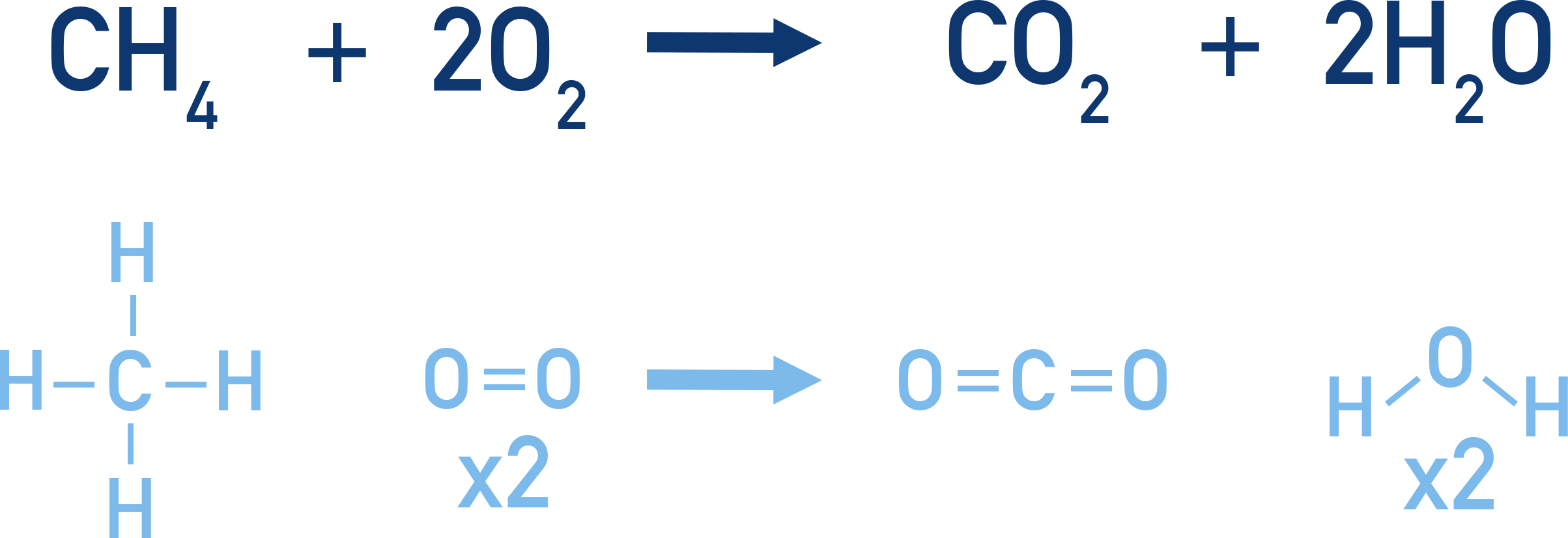Bond Enthalpies
Quick Notes
- Breaking bonds requires energy (endothermic, +ΔH).
- Forming bonds releases energy (exothermic, −ΔH).
- Bond enthalpy is the energy required to break 1 mol of a bond type in the gaseous state.
- Average bond enthalpies can be used to estimate reaction enthalpies:
ΔHr = Σ(bond energies of bonds broken) − Σ(bond energies of bonds formed)
Full Notes
Understanding Bond Enthalpy
Bond enthalpy (bond dissociation energy) is defined as: "The energy required to break one mole of a particular bond in the gaseous state."
- Breaking bonds requires energy → endothermic (+ΔH).
- Making bonds releases energy → exothermic (-ΔH).

Example:
- Breaking H–H bond: H₂(g) → 2H(g), ΔH = +436 kJ mol⁻¹
- Forming H–H bond: 2H(g) → H₂(g), ΔH = −436 kJ mol⁻¹
Mean Bond Enthalpy
The mean bond enthalpy is the average energy required to break a bond type, averaged over several molecules containing that bond.
Example: The mean bond enthalpy of a C–H bond is +412 kJ mol⁻¹, but in different molecules the exact value will vary slightly.
Limitation: Because bond enthalpies are averages, enthalpy calculations using them are approximate compared to experimental values from calorimetry.
Calculating Enthalpy Change Using Bond Enthalpies
The enthalpy change of a reaction can be estimated using:

- Bonds broken (reactants) → energy absorbed (+ΔH).
- Bonds formed (products) → energy released (-ΔH).

Bond enthalpies apply to gaseous substances. If the substance isn’t in the gas phase, you may need to include enthalpy of vaporisation in your calculations.

Reaction: CH₄ + 2O₂ → CO₂ + 2H₂O
Bond enthalpies:
- C–H = +412 kJ·mol−1
- O=O = +498 kJ·mol−1
- C=O = +805 kJ·mol−1
- O–H = +463 kJ·mol−1

- Bonds Broken (Reactants)
- CH₄: 4 × C–H = 4 × 412 = 1648 kJ
- O₂: 2 × O=O = 2 × 498 = 996 kJ
- Total broken = 1648 + 996 = 2644 kJ
- Bonds Formed (Products)
- CO₂: 2 × C=O = 2 × 805 = 1610 kJ
- H₂O: 4 × O–H = 4 × 463 = 1852 kJ
- Total formed = 1610 + 1852 = 3462 kJ
- Calculate ΔH
ΔH = (bonds broken) − (bonds formed)
ΔH = 2644 − 3462 = −818 kJ·mol−1
ΔH = −818 kJ·mol−1 (exothermic)
Accuracy of Bond Enthalpy Calculations
Experimental enthalpy values (e.g., from calorimetry) are usually more accurate than those calculated using average bond ethanlpies because:
- Average bond enthalpy values are approximations.
- We have to assume all substances are in gaseous state (not always true in real conditions).
Summary
Bond enthalpies provide a way to estimate reaction enthalpies by comparing energy required to break bonds in reactants with energy released when forming bonds in products:
ΔHr = Σ(bonds broken) − Σ(bonds formed)
This method gives useful approximations and helps explain the energetic basis of chemical reactions.
